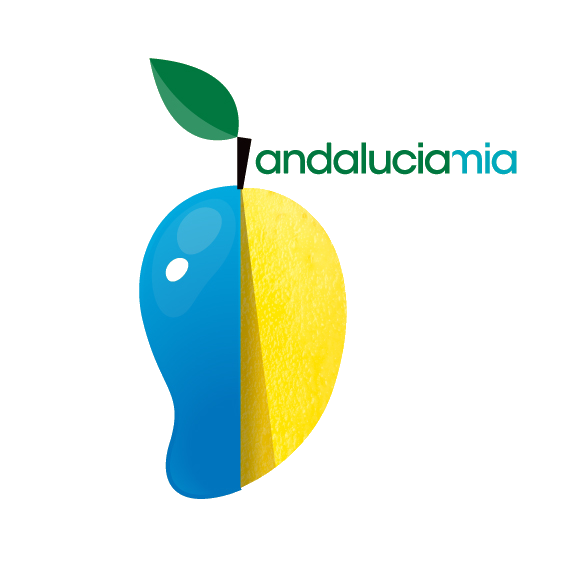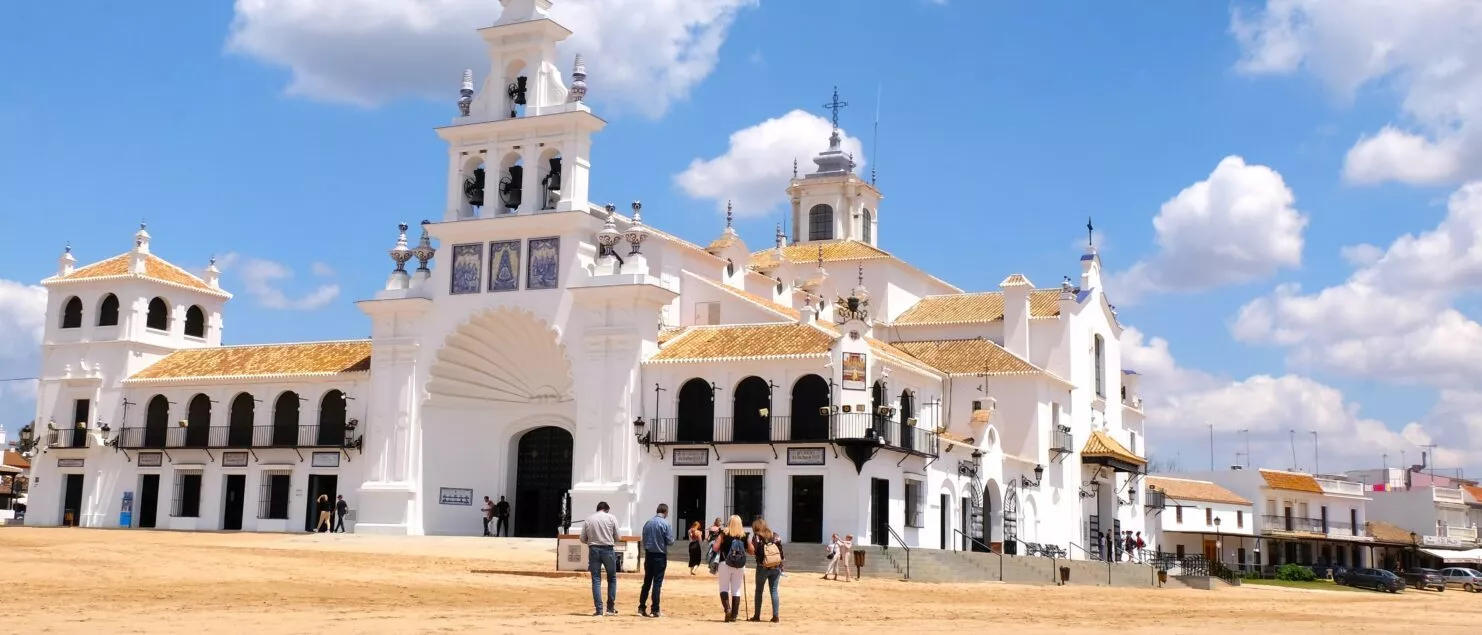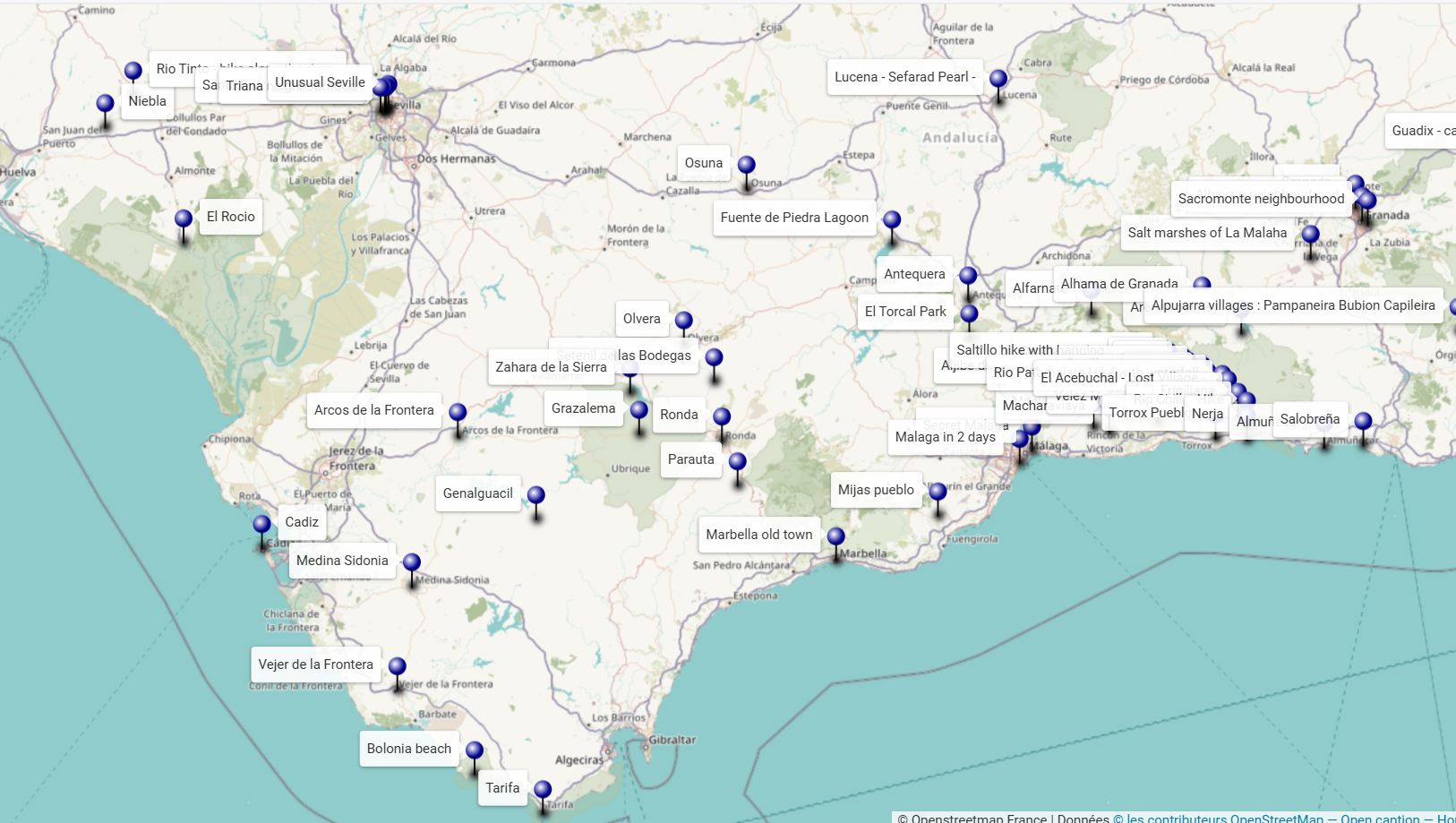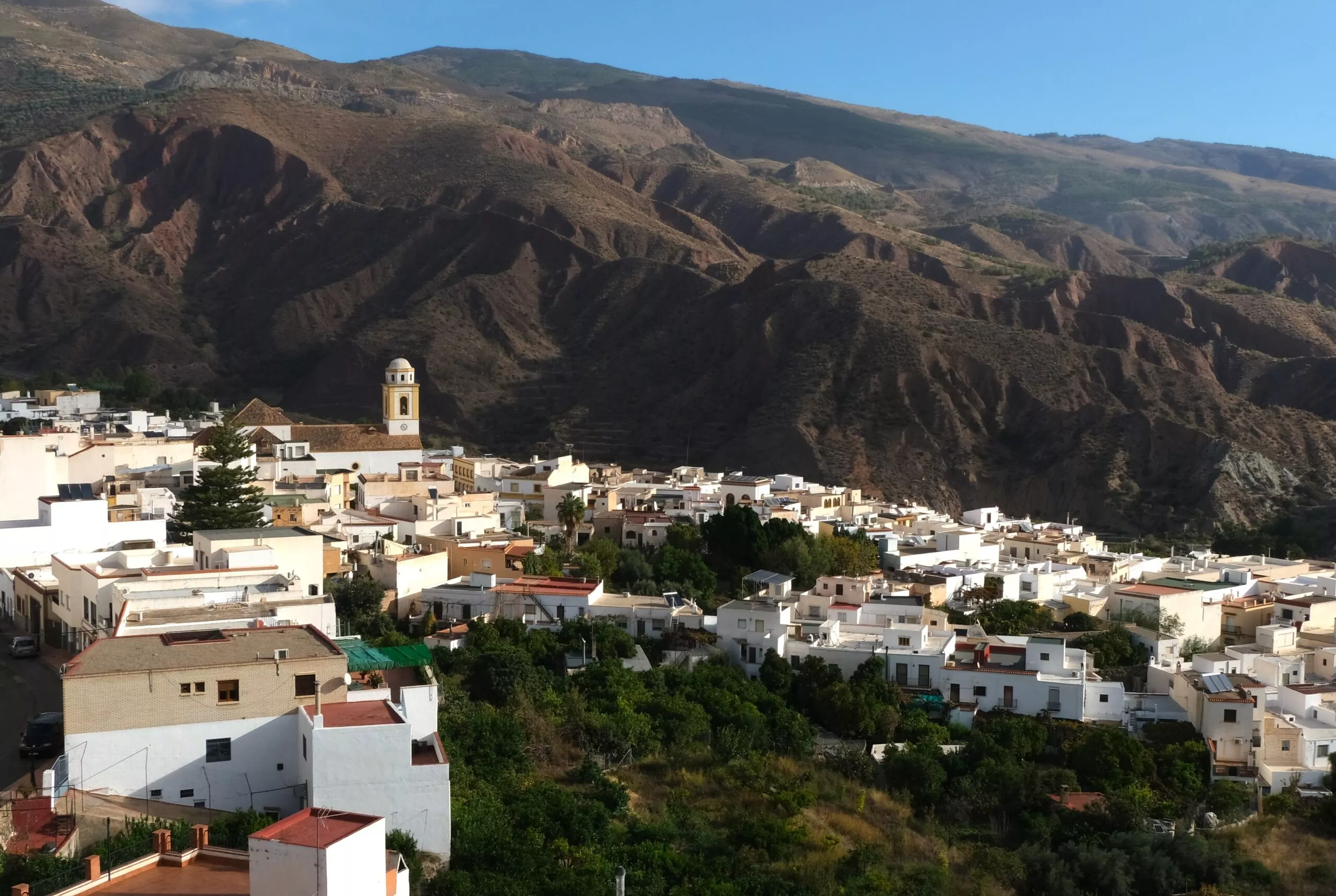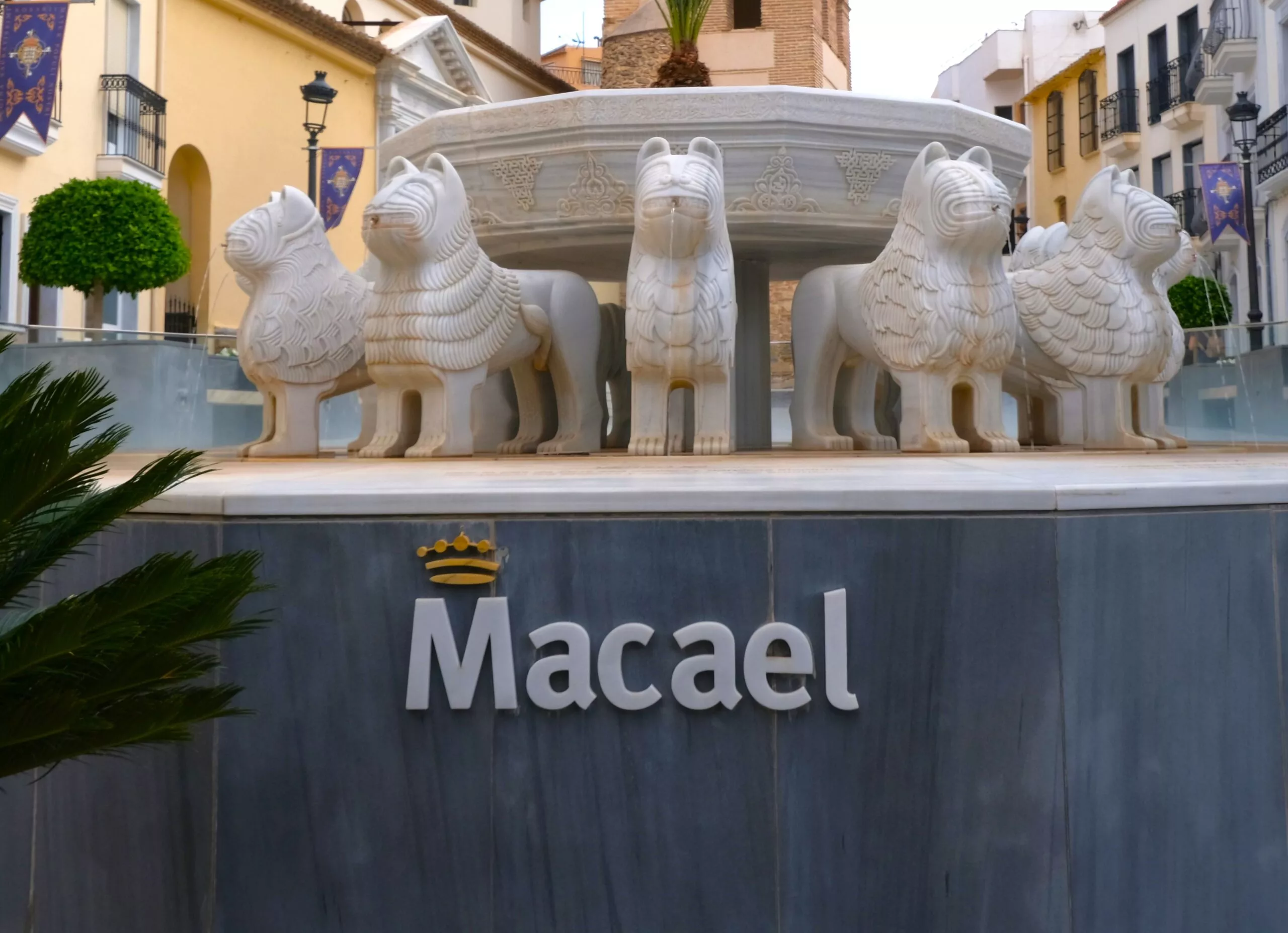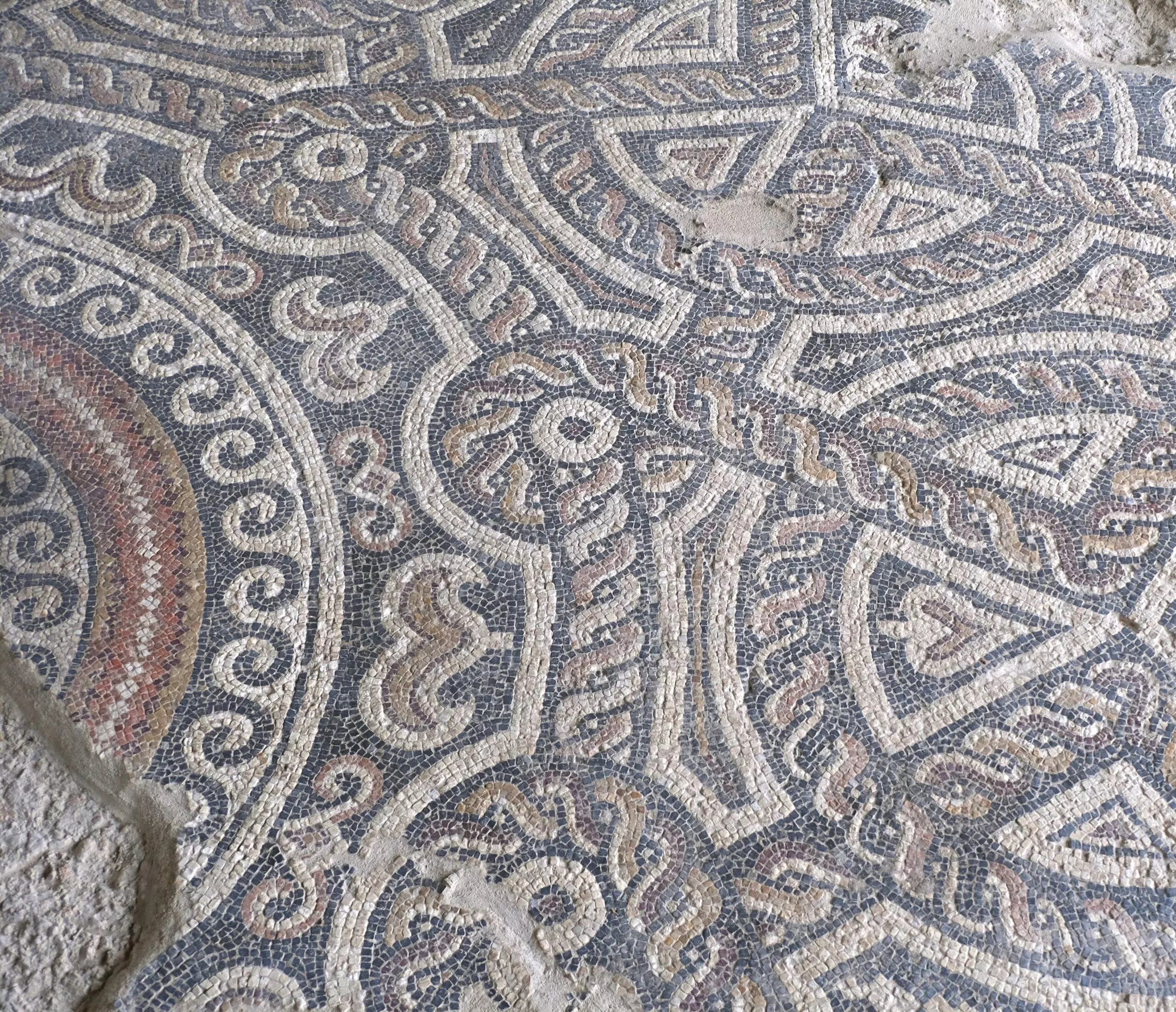El Rocio, an absolutely unique village in Andalucia
The essential things to see and know in El Rocio
In this article you’ll find the essential information on what to see in El Rocio :
- A few words about El Rocio
- Where is El Rocio on the map?
- What to see in El Rocio
- What to do in El Rocio
- Booking accommodation
- Useful links (bookings and visits in Andalucia)
- What to see near El Rocio
- Continuing your trip to Andalucia
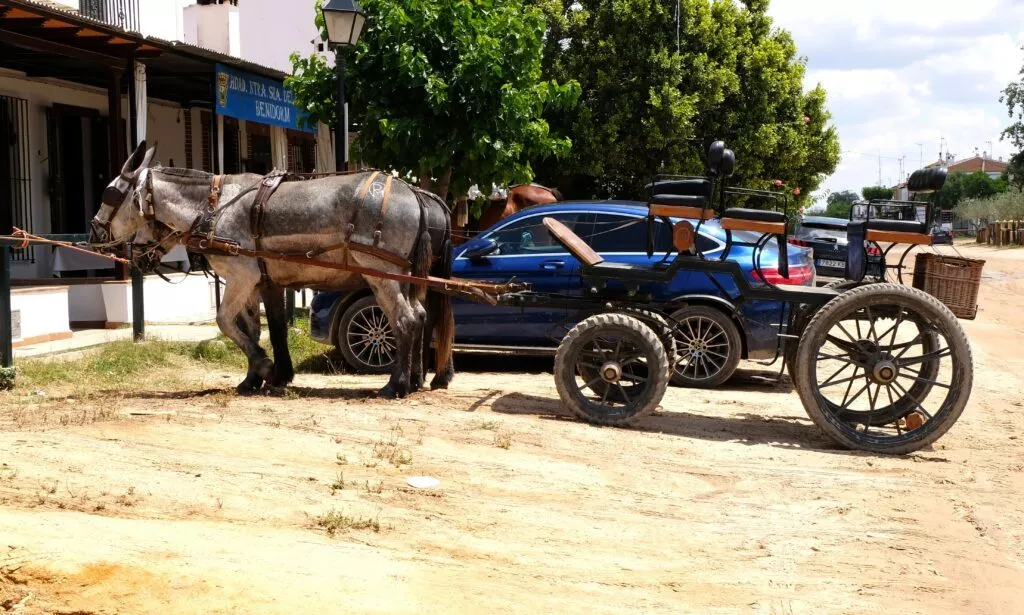
A few words about El Rocio
El Rocío is a village in the province of Huelva. It is part of the Doñana National and Nature Park. The village is therefore protected by UNESCO as a World Heritage Site!
It is 80km from Seville. El Rocio is famous for its romeria, Europe’s largest pilgrimage.
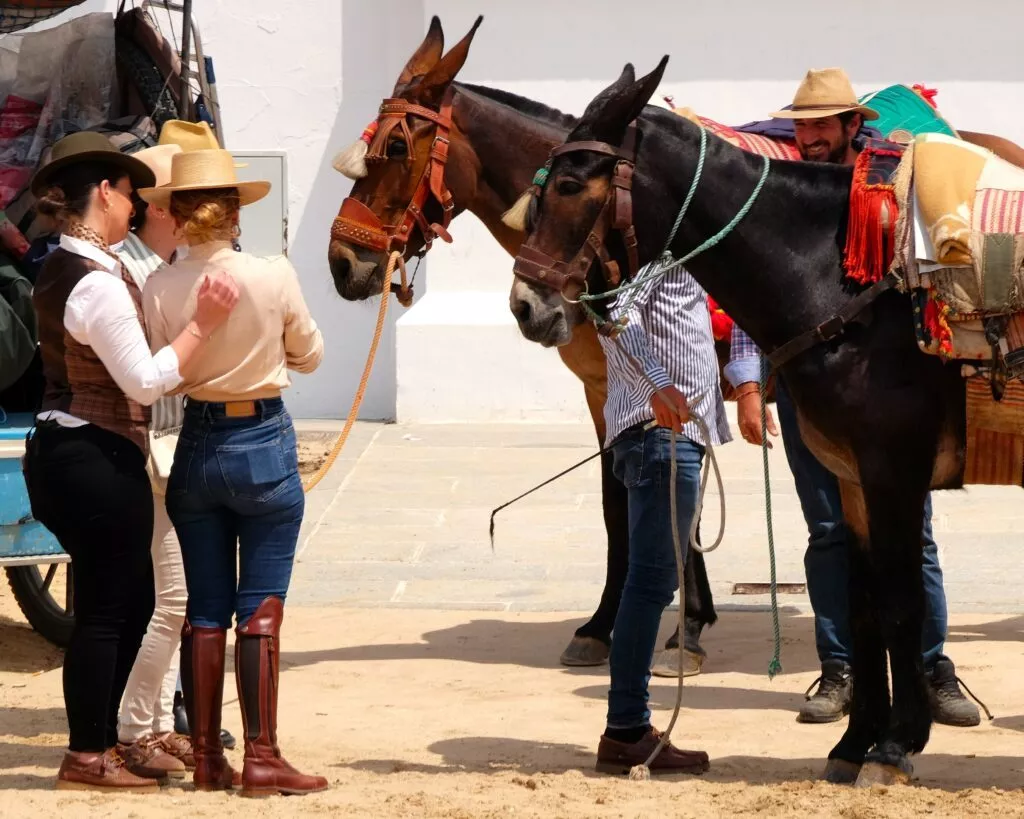
However, it is also known for its western décor, with its sandy streets, saloon-like restaurants and horses tied to the wooden balusters in front of the houses.
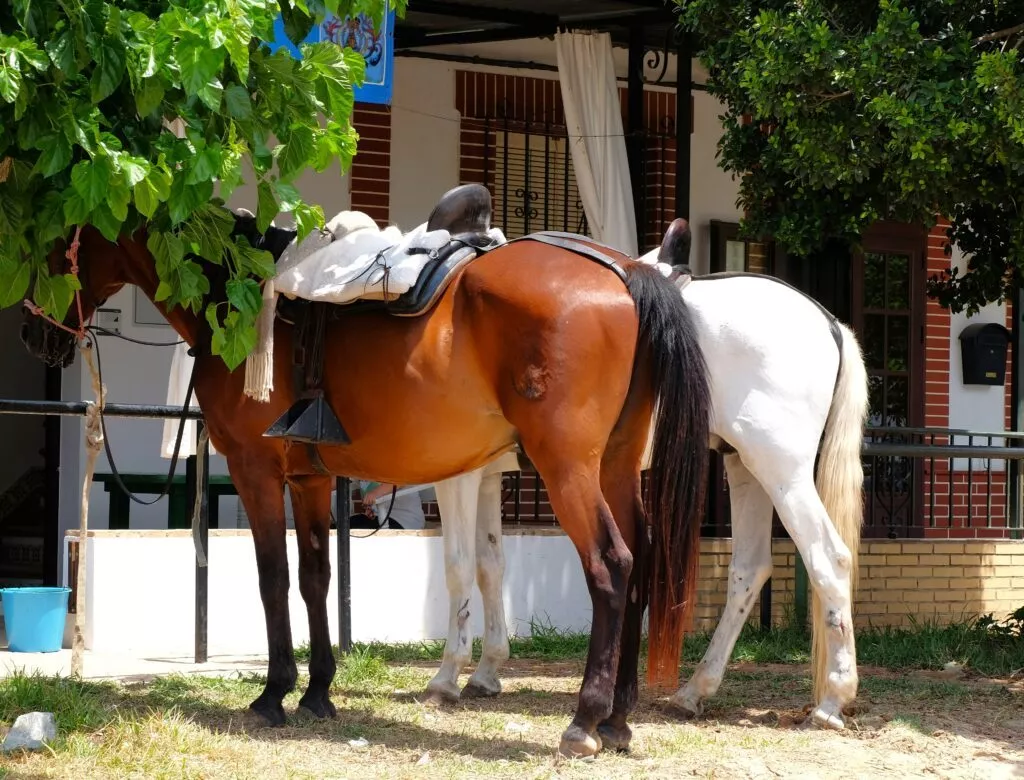
El Rocio is one of the most surprising villages I’ve seen in Andalucia. It’s surprising for its origins, its culture, its appearance, its traditions and its environment.
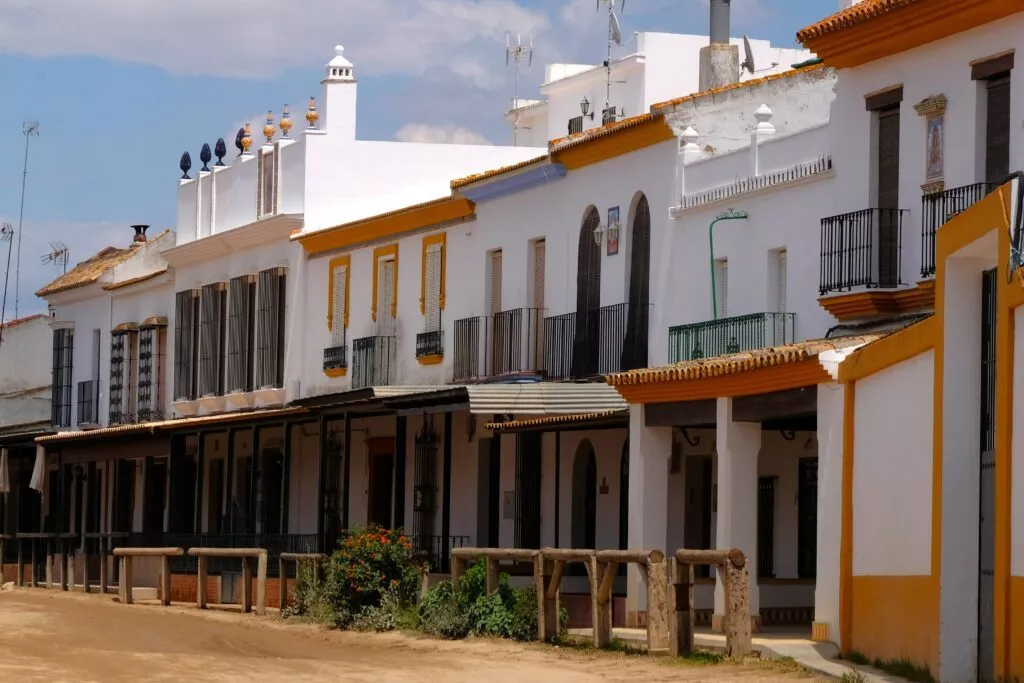
The origin of the name and the village
This is a village born of legend, and not of Phoenician, Roman or Arab settlement as in 99% of cases.
The village, like the famous romeria of the same name, was founded in the 13th century when a hunter discovered a statue of the Virgin Mary hidden in a tree on this spot. The story goes that the hunter took the statue with him. On his way back to Almonte, he took a nap and woke up to find the statue missing. He set off in search of it and found it in the tree where he had first seen it.
This event gave rise to the cult of this Virgin – the Virgen del Rocio – among the Catholic faithful. For several centuries, the site remained a place of pilgrimage surrounded by marshland.
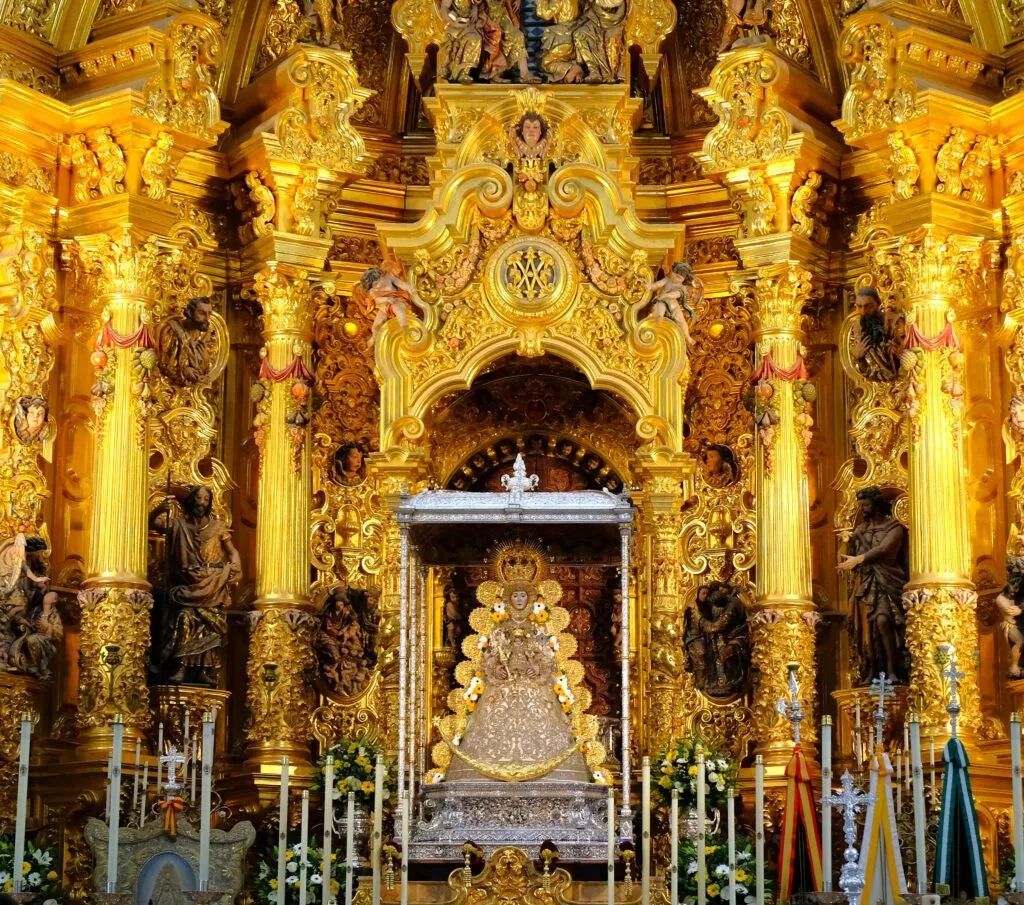
The hermitage linked to this pilgrimage was then called Santa María de las Rocinas (Our Lady of the Brambles), and later changed its name to Nuestra Señora del Rocío (Our Lady of the Dew).
Anecdote: in 1768, a soldier named Fernando Pérez de Guzmán asked the Court of Castile for permission to create a village called Guzmanópolis ….. This project never saw the light of day.
A few years later, the Duke of Medina Sidonia settled a few families on the site. The village of El Rocio was born in 1789!
The inhabitants of the village called themselves panzorrino!
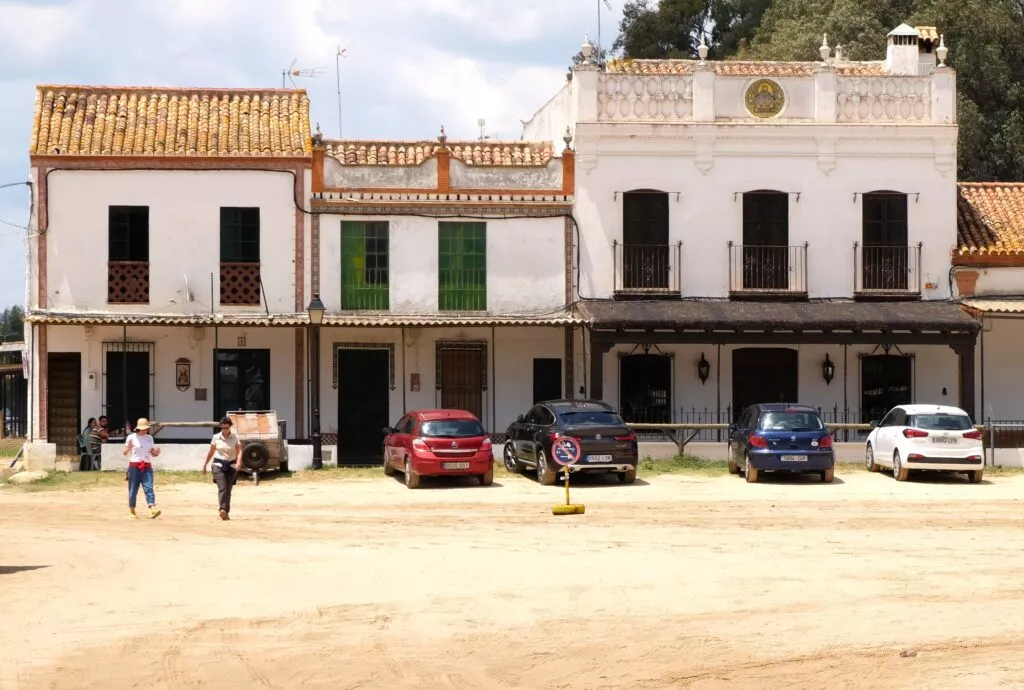
Where is El Rocio on the map
El Rocio is located close to the Doñana National Park, a UNESCO Biosphere Reserve. The surrounding landscapes offer a unique biodiversity, with marshes, dunes, forests and an abundance of wildlife, including migratory birds.
What to see in El Rocio
El Rocio has a very special feel to it, with absolutely no hint of modernity.
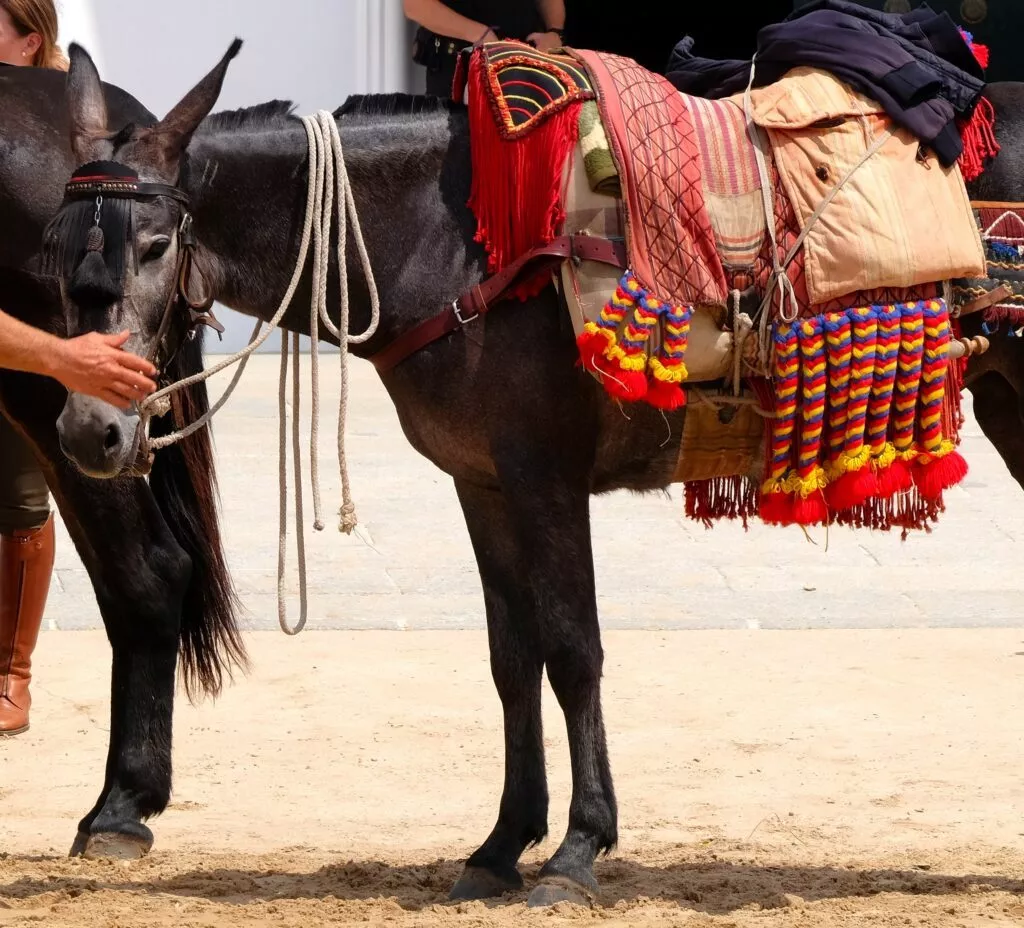
The village is reminiscent of the Wild West of the late 19th century. It was also declared a Site of Cultural Interest in 2006, as was its hermitage.
An important point to remember before exploring El Rocio is that the vaquero (cowboy) lifestyle seen in western films originated in Spain. More specifically, this style originated with the people living along the Guadalquivir, in particular from Seville to Cadiz and the surrounding area.
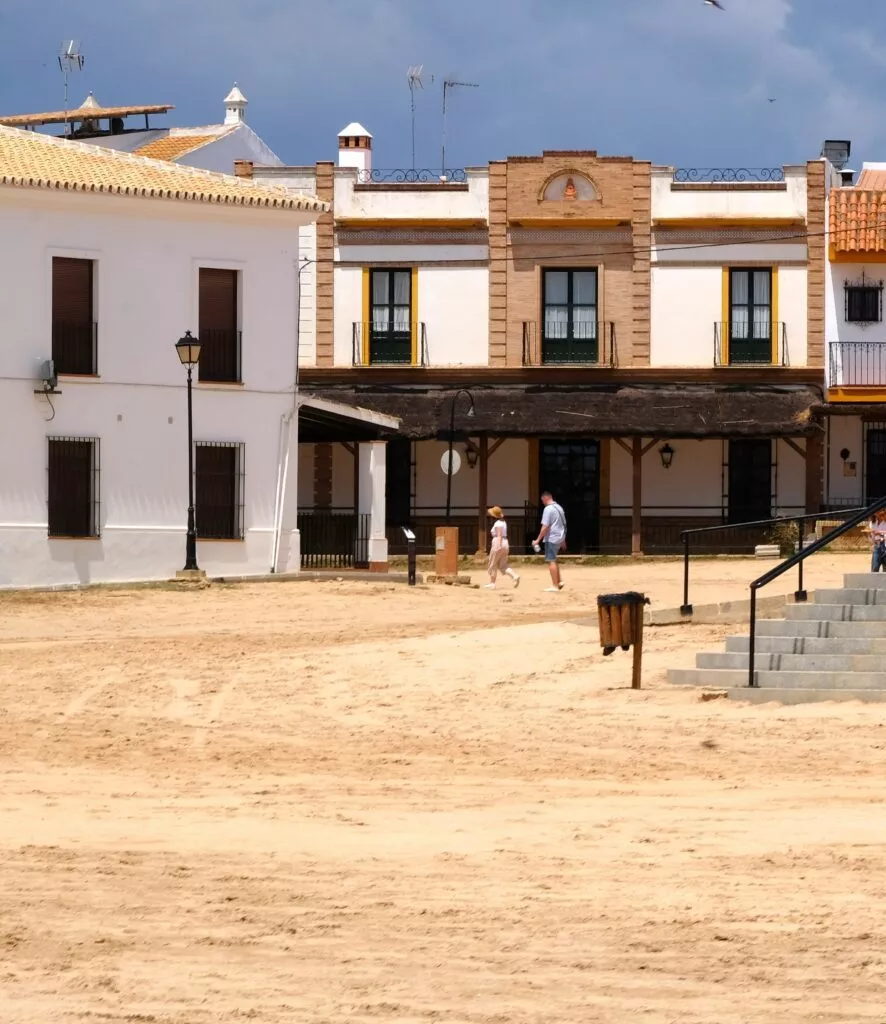
After 1492, and from the 1500s onwards, the Spanish explored the Americas and began to settle there with their way of life and their clothes. They brought with them animals such as cattle and horses and built ranches.
Note: for a long time, the boats arriving in the Americas left from the river port of Seville on the Guadalquivir, from the area around Cadiz and from Palos de la Frontera.
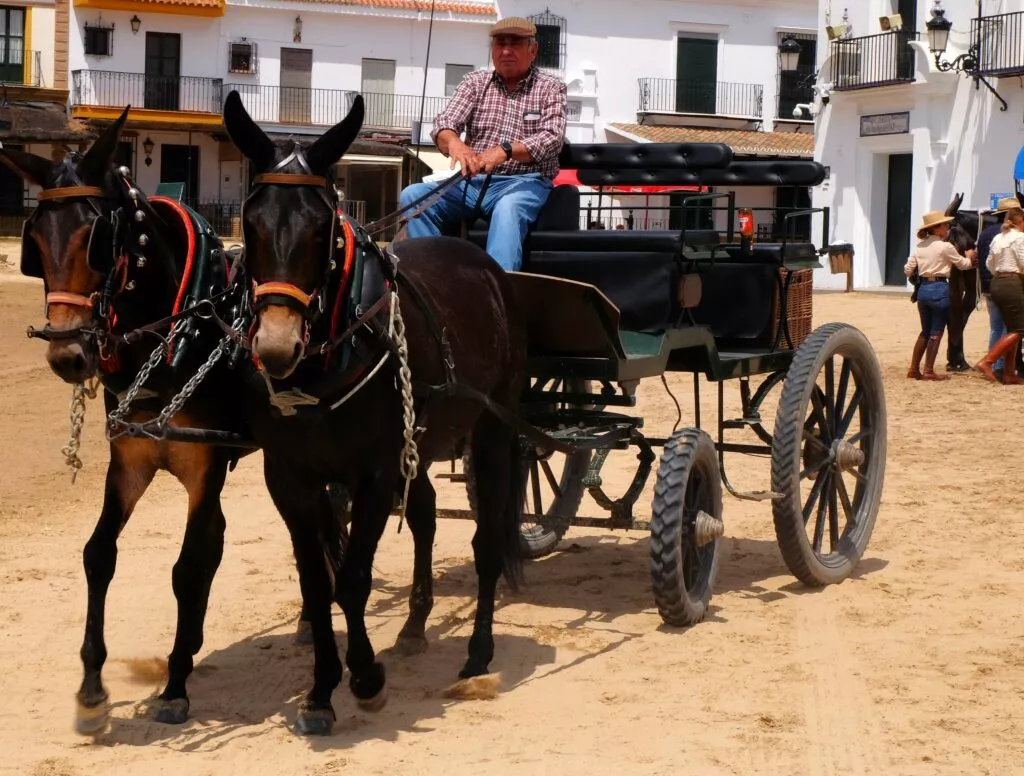
Strangely enough, this lifestyle and atmosphere have remained in El Rocio since its origins.
The funny thing is to think of the impact of the 7th art, of cinema, on the collective unconscious. Indeed, many of us go to the Tabernas desert in the province of Almeria to see scenes from the filming of numerous westerns, including those by Sergio Leone.
But if you really want to go back to the origins of this lifestyle, El Rocio is the place to go!
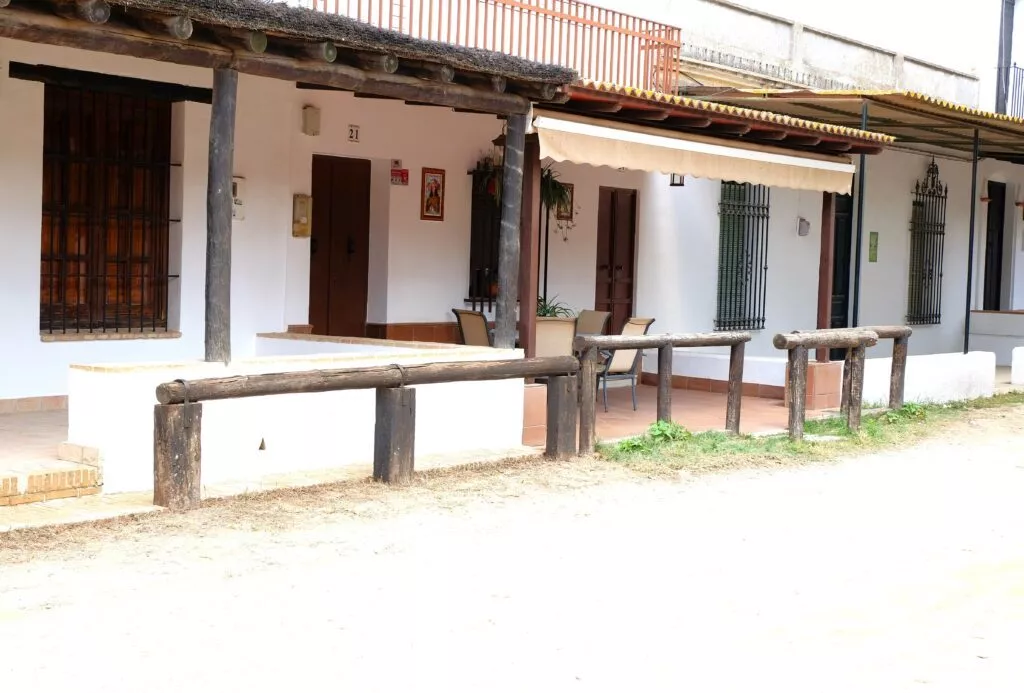
Sanctuary of Nuestra Señora del Rocio
This sanctuary is a beautiful and quite unique setting!
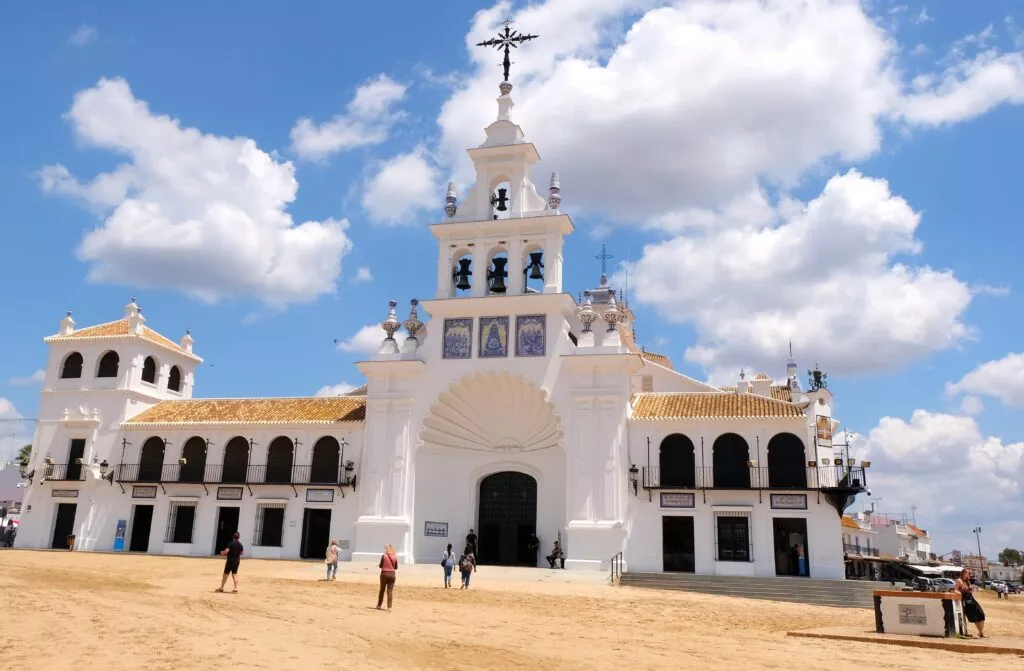
The interior is also very beautiful and richly decorated:
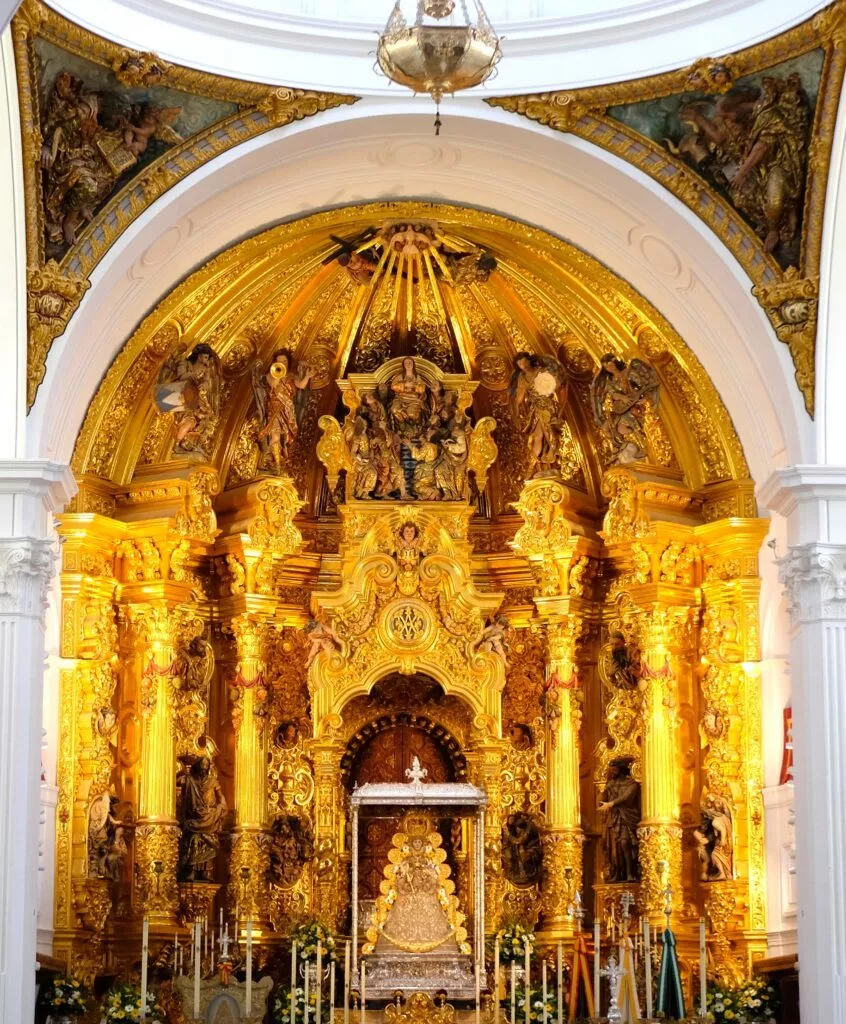
It lives up to the devotion of pilgrims to Our Lady of the Rocio.
Plaza del Acebuche – Wild Olive Tree Square
This is one of the main meeting places.
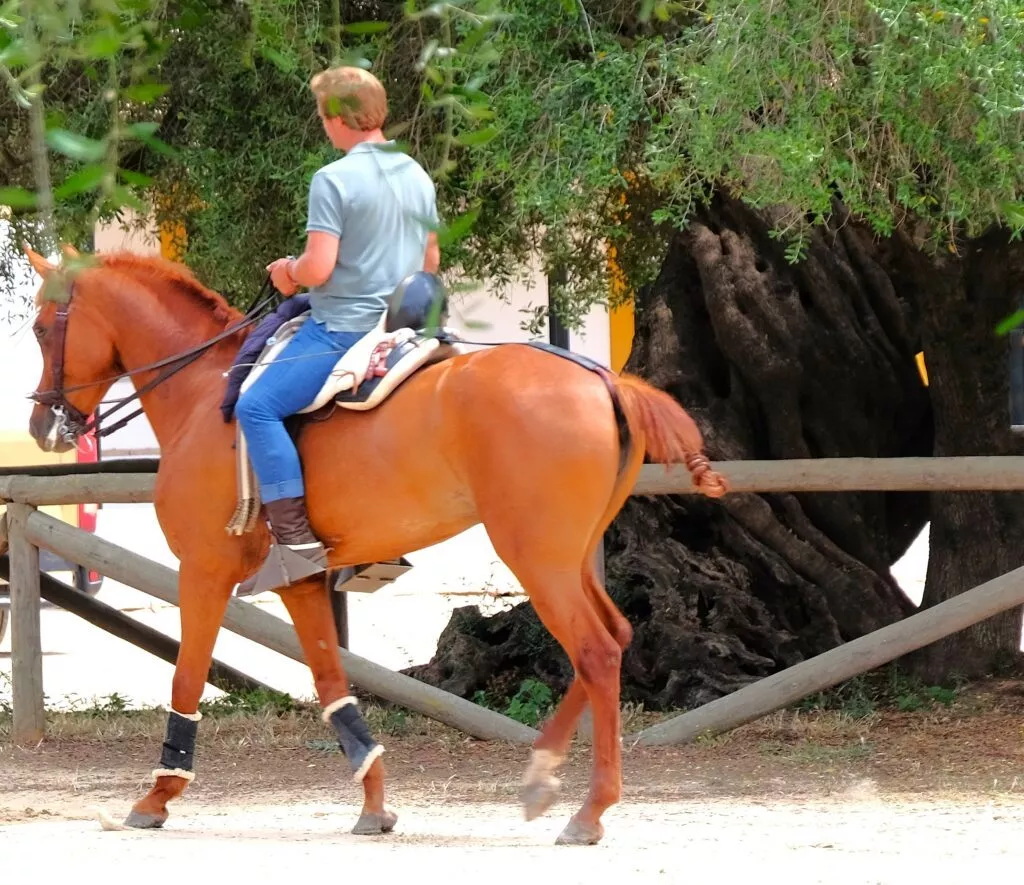
The thousand-year-old wild olive tree is easy to spot!
Las hermandades – the brotherhoods –
The houses of the hermandades are characteristic of El Rocio and, of course, of the romeria. There are around 130 brotherhoods in El Rocio, from all over Spain. Below, the Sanlucar de Barrameda brotherhood.
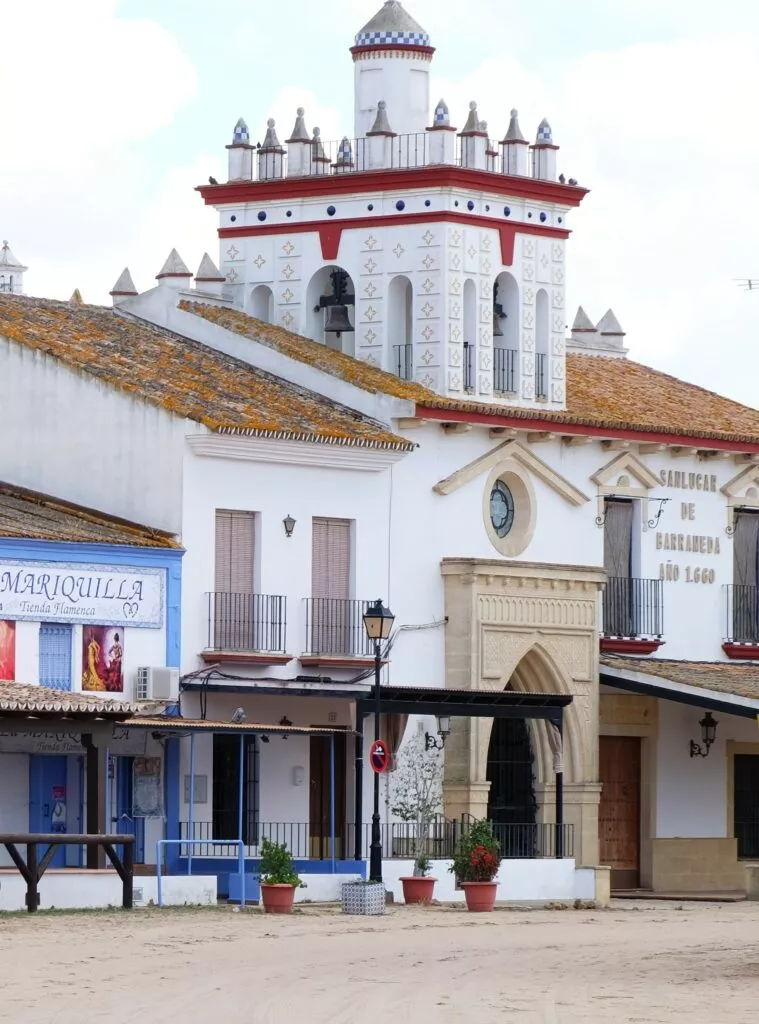
The most important is the brotherhood in the Triana district of Seville:
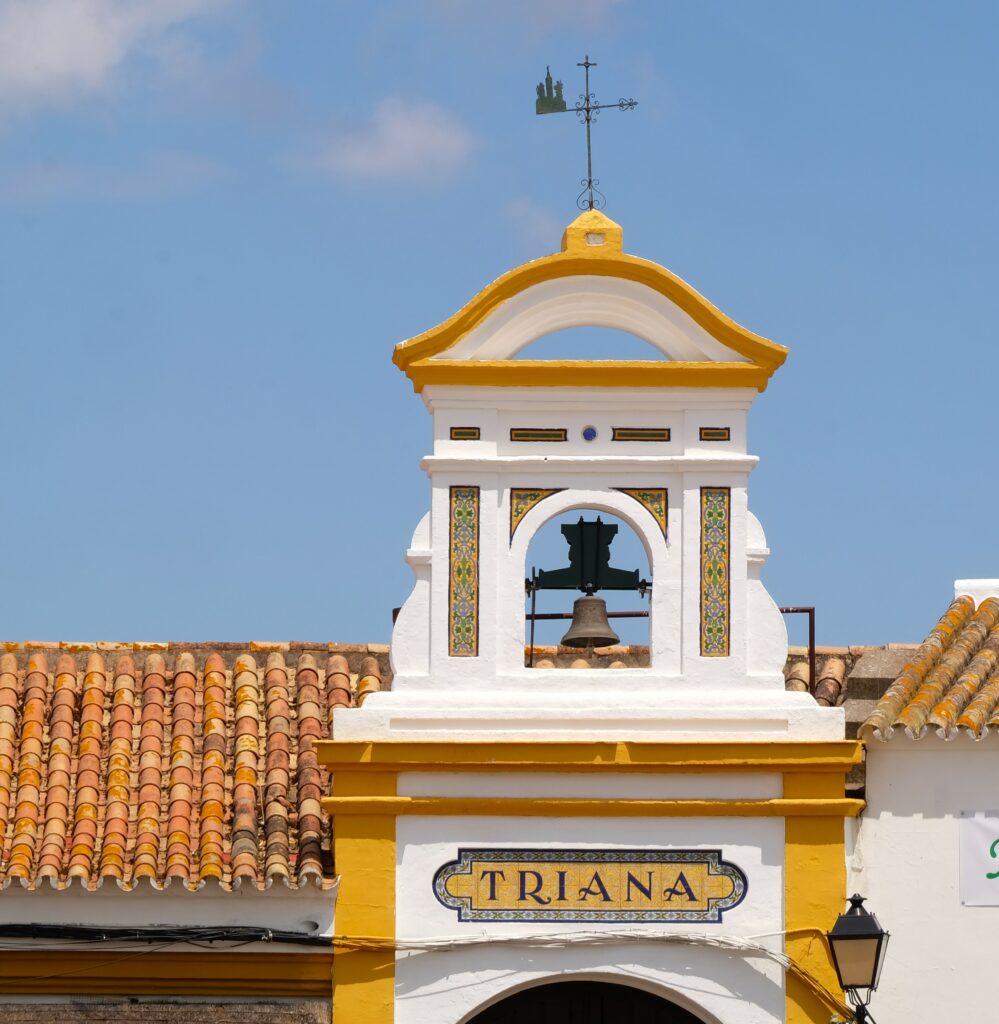
The Marismeño walk in El Rocio
This walk near the village of El Rocío borders the Doñana National Park.
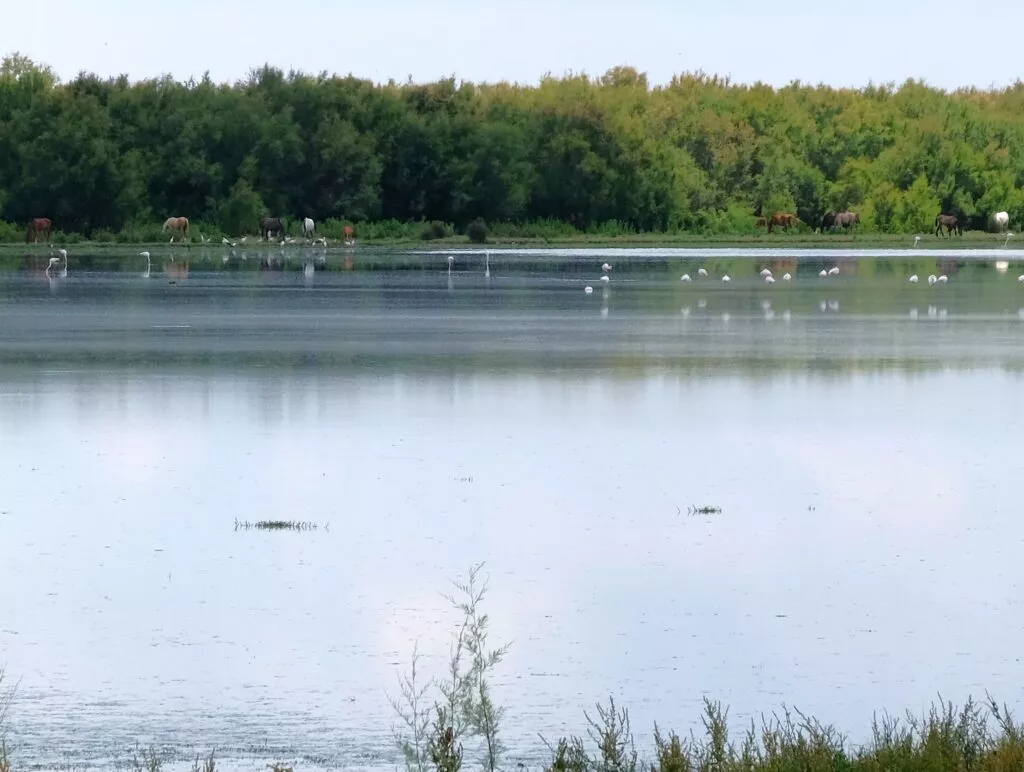
Anecdote: the name of the park comes from the wife of the seventh Duke of Medina Sidonia, a feudal lord who built a palace inside the park for his wife Doña Ana Gómez de Guzmán y Silva.
Created in 1969, the park covers an area of around 100,000 hectares and is the largest in Spain. The park is home to numerous species, some of which are protected, including the Iberian lynx, golden eagle, pink flamingo, wild boar, cow and countless deer and hinds.
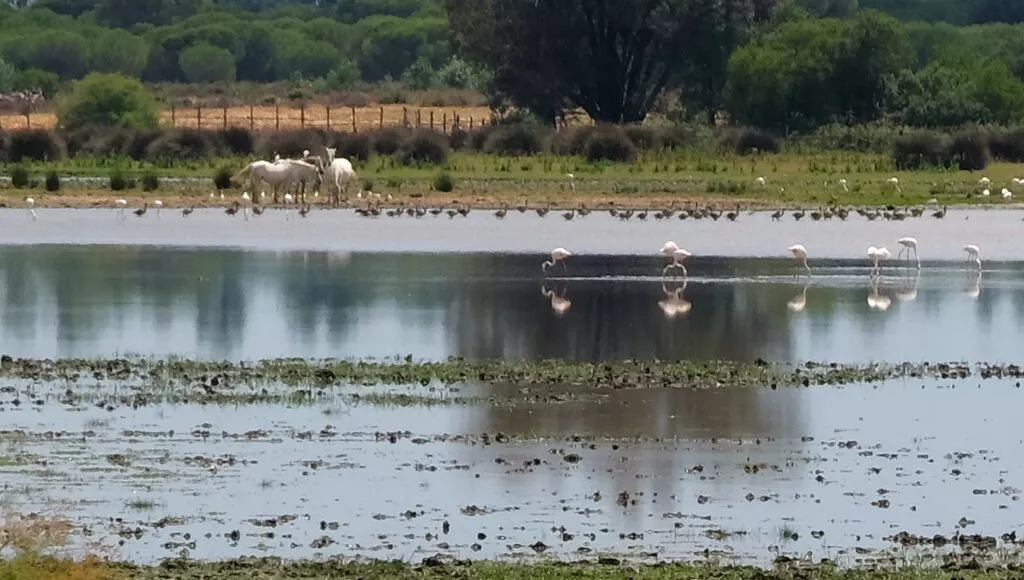
This walk runs alongside the marshes and pond of La Boca. You’ll find yourself in the middle of nature, watching wild horses and pink flamingos. It’s a truly magical moment.
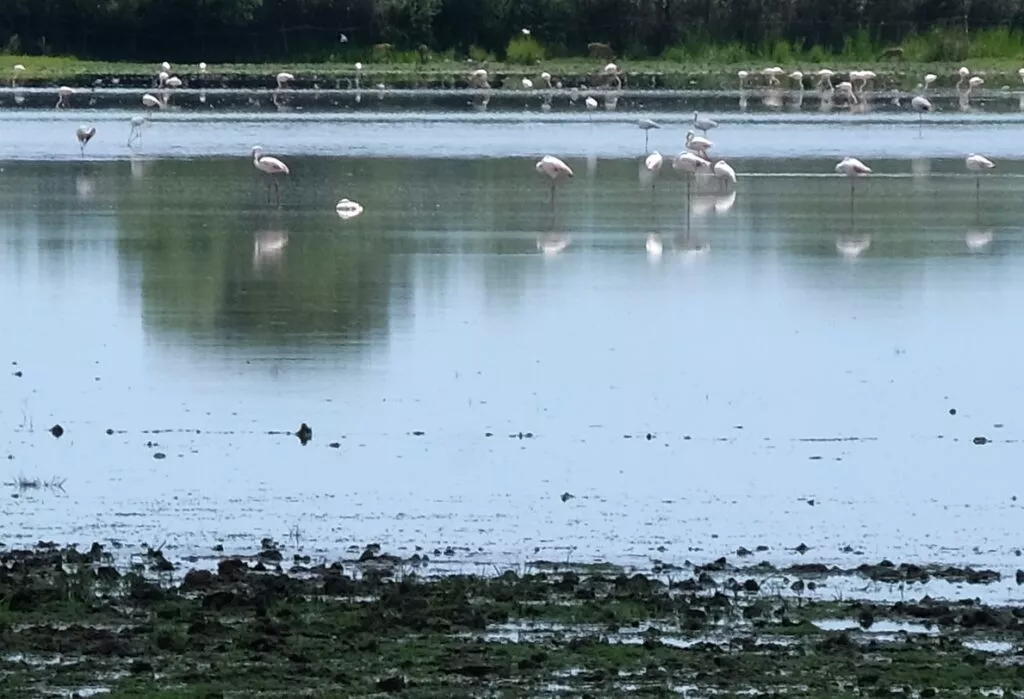
At the end of the day, the walk also offers marvellous sunsets to watch.
The Romeria de El Rocio in May
At the end of May, El Rocio takes on a whole new dimension when it hosts Europe’s largest pilgrimage. The village grows from 2,000 inhabitants to almost ….. a million people to welcome the Romeria del Rocio.
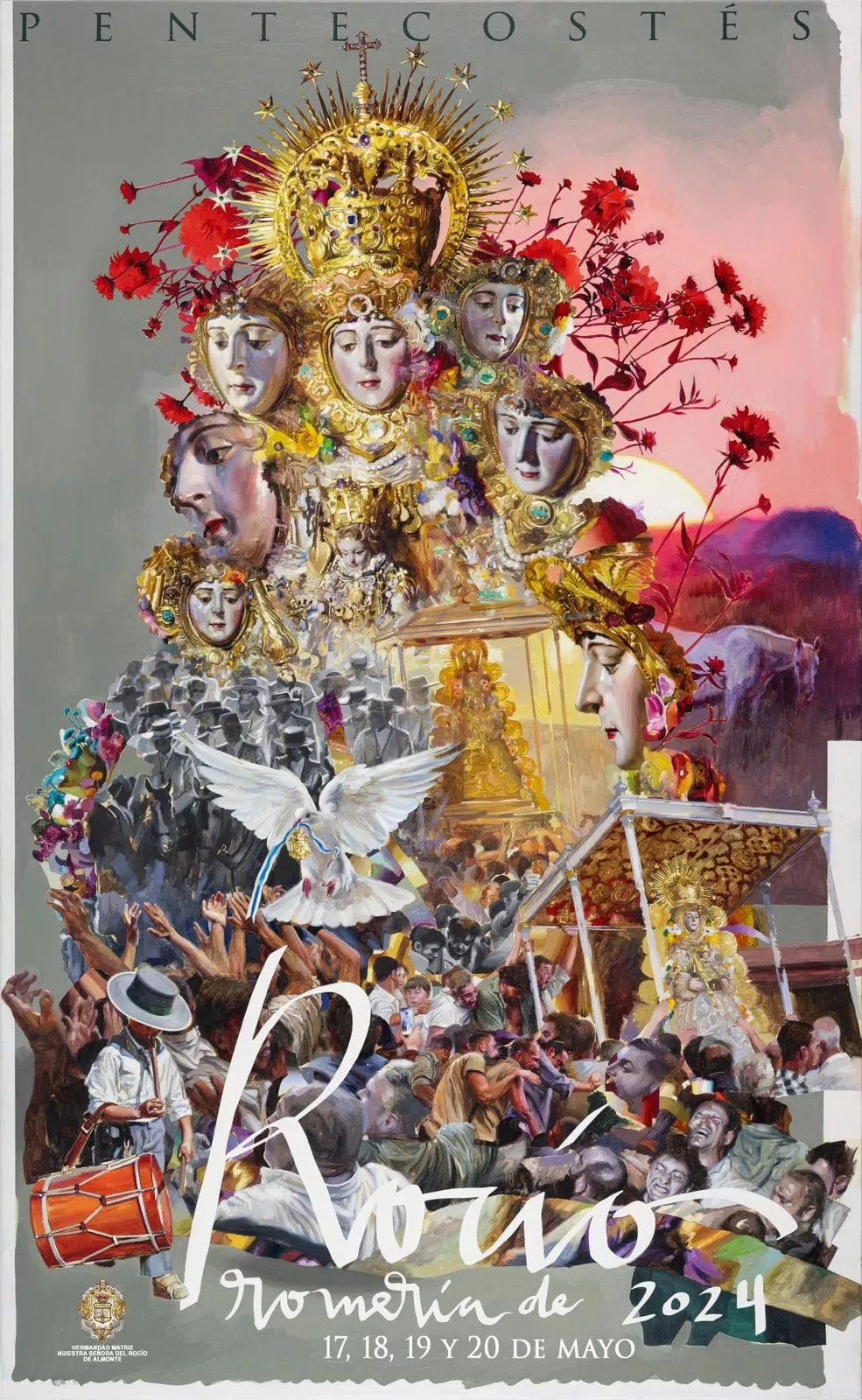
Pilgrims arrive from all over Spain, on horseback, on foot, on mules, in ox-drawn carts, in tractors, etc. …..
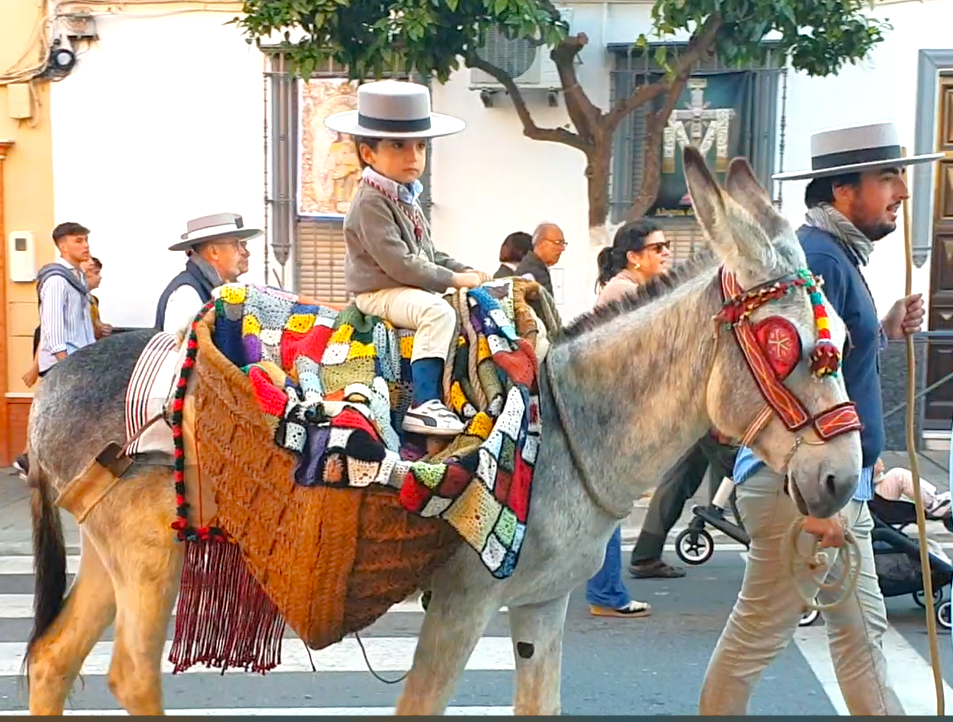
Until 1653, the El Rocío pilgrimage was known as the Fiesta a Nuestra Señora de las Rocinas. It’s a festival of incredible fervour, and one you’ll want to experience if you get the chance.
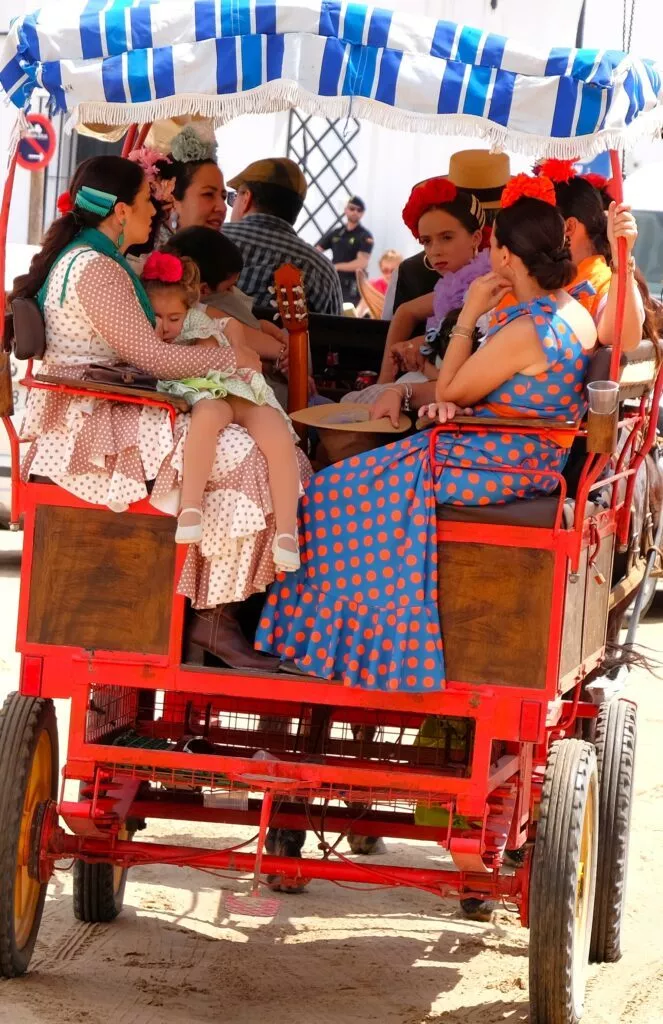
Flamenco also plays an important role for a few days during this major popular event. The women wear traditional costumes and the whole village resounds with the songs, dances and prayers of the faithful.
They celebrate the blanca paloma (white dove) and the Reina de las Marismas (Queen of the Marshes), two of the nicknames given to Nuestra Señora del Rocío.
Another great celebration in El Rocio
Almonte, the town to which El Rocio belongs, organises the Saca de las Yeguas every year at the end of June. This tradition goes back 500 years (since 1504). It’s a great celebration of the horse.
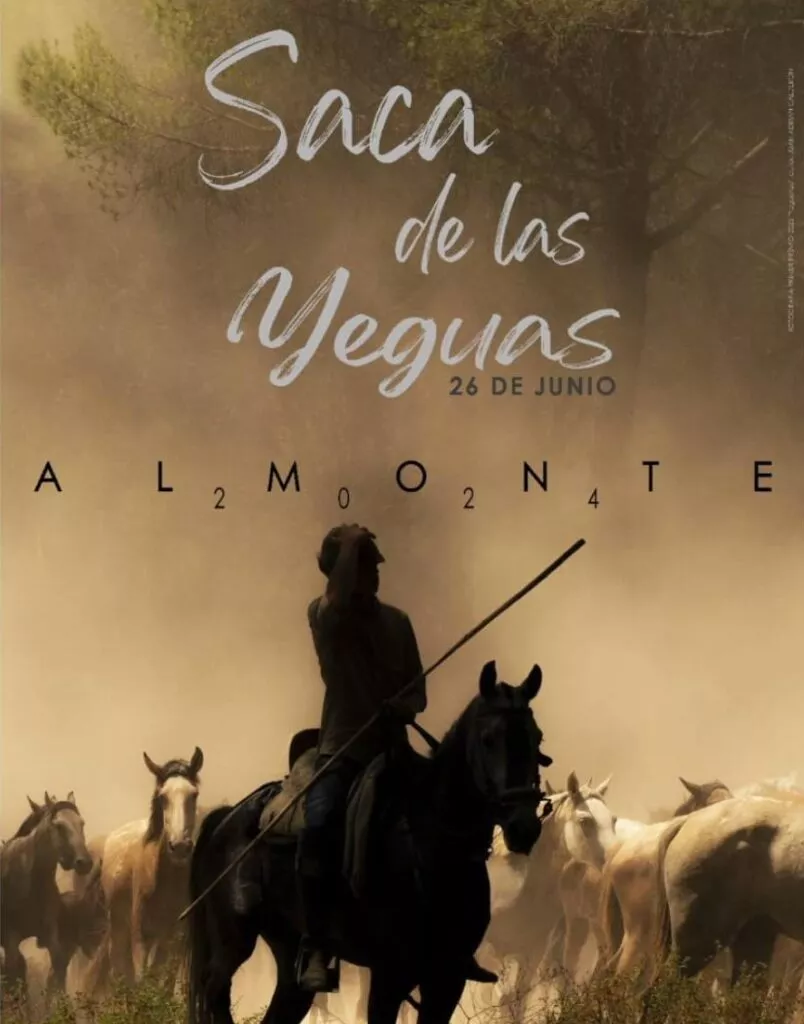
During this period, all the mares and their foals living in the wild around El Rocio and in the surrounding marshes are collected.
Then, on the way to Almonte, the mares are presented in front of the hermitage for a blessing, before being released into the village.
This festival takes place every year on 26 June. Around 1,600 mares and foals pass through El rocio!
Note: during this celebration, the villagers take advantage of the opportunity with vets to worm the animals and treat them if necessary.
Where to eat in El Rocio?
There are several restaurants in El Rocio where you can sit with your feet in the sand…. , such as the Pensión-restaurante Cristina :
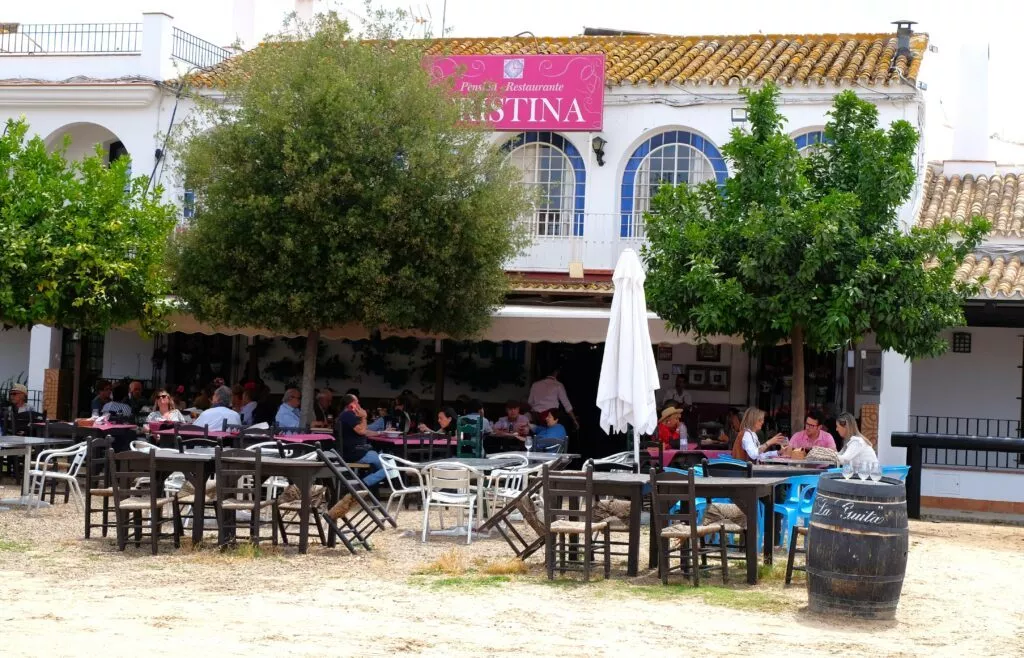
But there’s also the restaurant at the Hotel Toruño, with its saloon atmosphere, which is well worth a stop. What’s more, it offers a beautiful view of the marshes opposite the hotel.
Beaches near El Rocio
From El Rocio, the easiest and shortest way is to reach Matalascañas, just a few kilometres away.
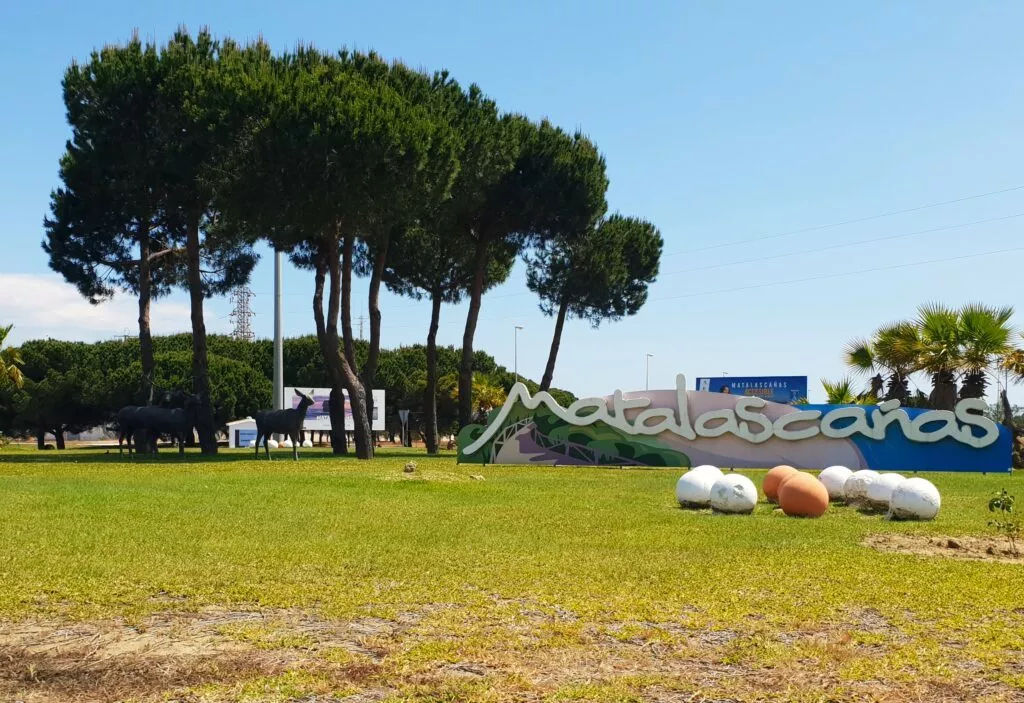
The 4 km-long beach is a real beauty, with sand as fine as flour. The beach is very well known to the people of Seville. Its distinguishing feature is the Torre de la Hoguera, which is in the water and in ruins today.
This watchtower was built by order of Philip II in 1577, along with 6 others, to keep watch over the coast. At the time, Berber pirate attacks were very common.
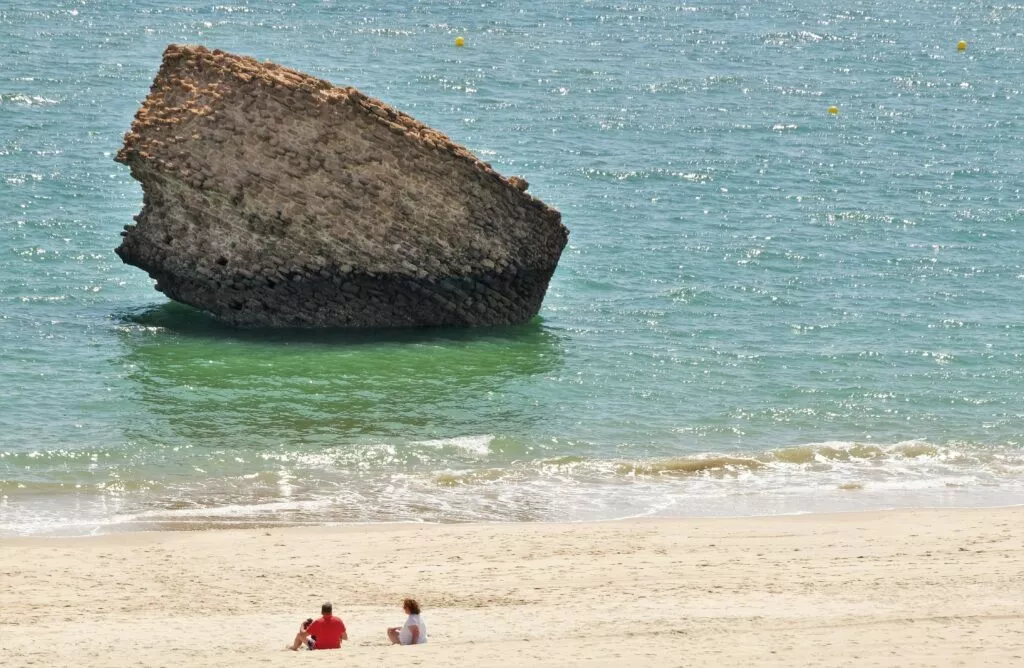
Right next to the beach, you can enjoy a lovely little stroll. There is a wooden footbridge that crosses the dunes. This park is commonly known as the balcony of the Atlantic. It’s a beautiful setting, with magnificent views over the beach.
What can you do in El Rocio?
Below, you’ll find the activities and visits on offer around El Rocio.
You can also book them online today (with free cancellation):
Book accommodation
Here’s a very charming idea for a short break in El Rocío: the Hotel Malvasia. A hotel with a beautiful interior and swimming pool.
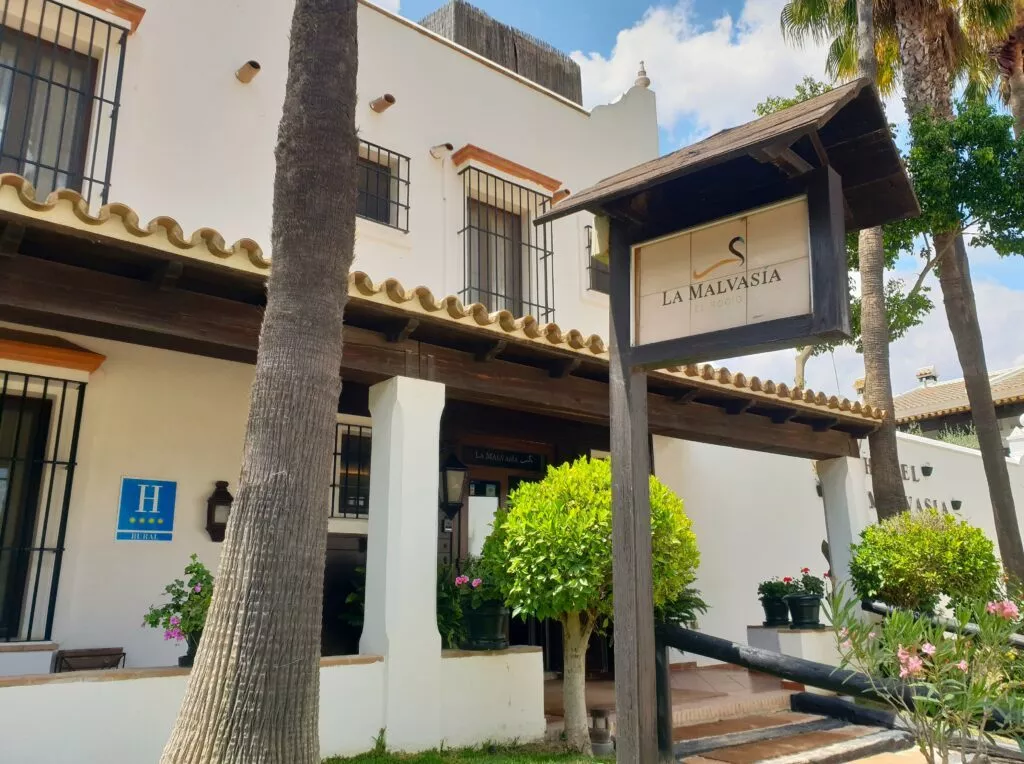
Here’s the link to find out more, see photos and/or book the hotel: Hotel Malvasia.
Below you will find all the hotels and accommodation available in El Rocio, once you have selected your dates:
Booking.com
Some useful links for your trip to Andalucia
Easy and economical bookings
What to see near El Rocio?
The province of Huelva in Andalucia hides many treasures. It’s a beautiful province to discover, and here are 2 more examples:
The incredible village of Niebla
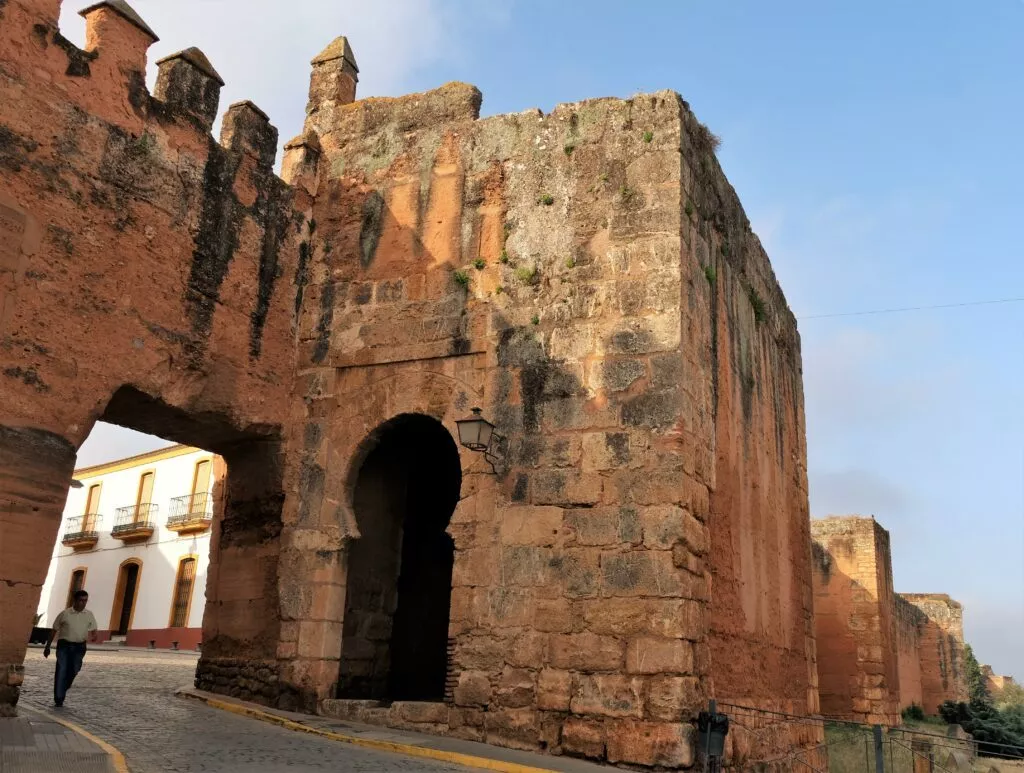
The small town of Niebla, hidden behind a 2 km long wall, has an incredible history.Here’s a small town to visit off the beaten track!Discover the rio Tinto – the red river – in Niebla.
Discover the rio Tinto – the red river – in Niebla
The rio Tinto is a unique river in the world that deserves to be seen, as do the landscapes that surround it.
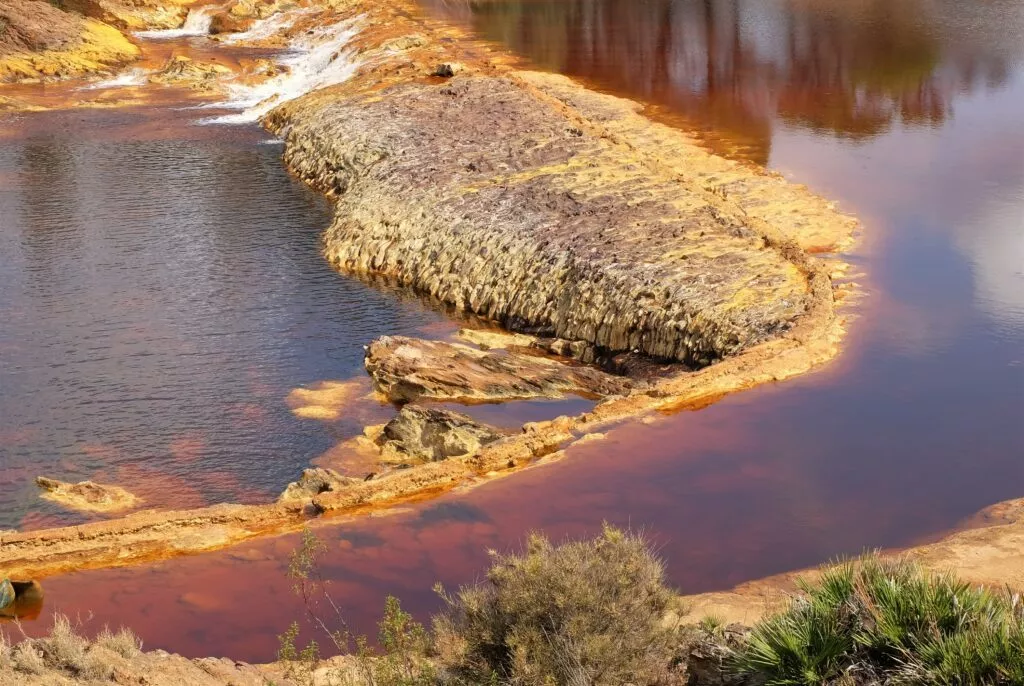
The best thing to do is hike along the banks of the Rio Tinto – red river. You’ll also discover ancient flour mills along the river.
Continue your trip to Andalucia
Seville
Seville, the capital of Andalucia, is a city full of treasures to discover and monuments to visit.
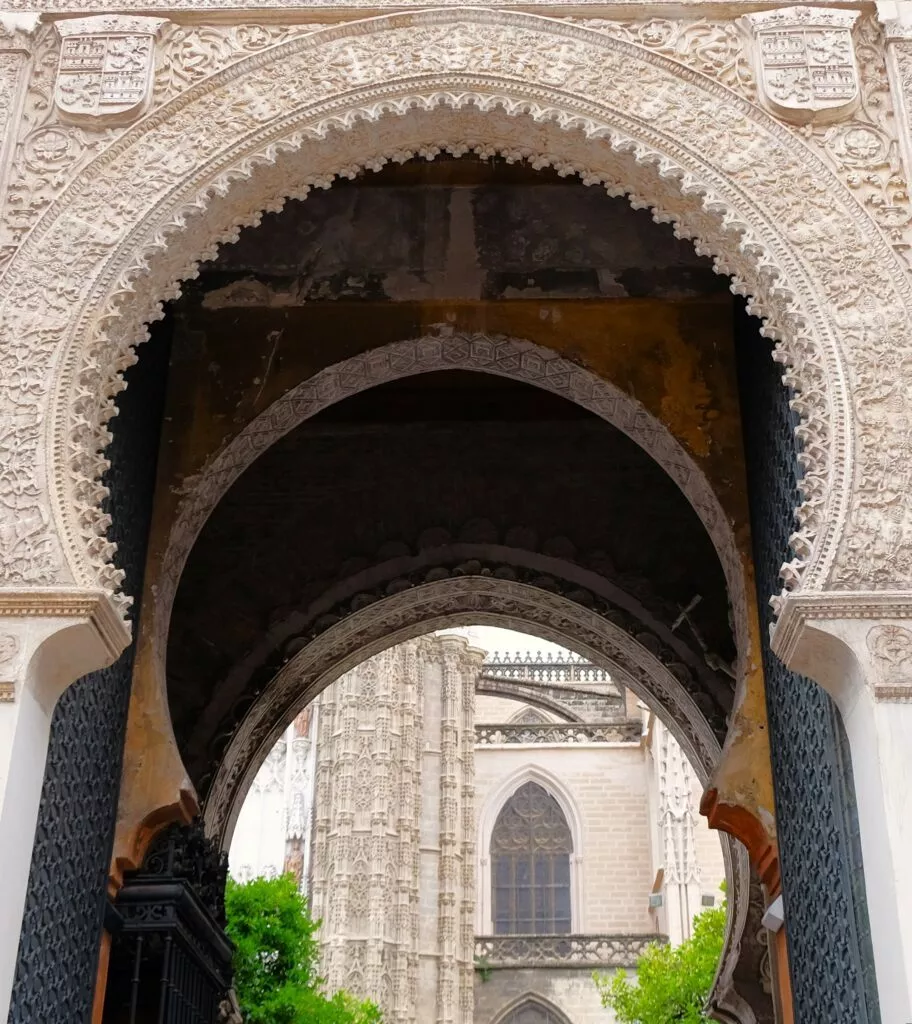
Here you will find everything you can see in Seville in 3 days. And for those who will stay longer you will also find information on secret Seville and the Santa Cruz and Triana districts.
Cadiz
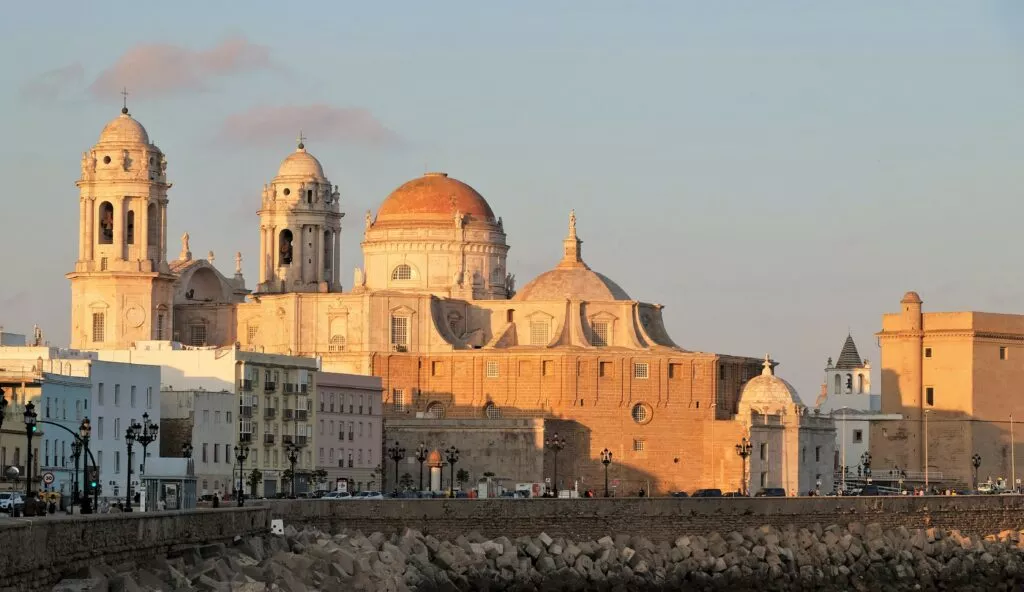
Malaga
When you reach the Costa del Sol you will find in this link what to see in Malaga :
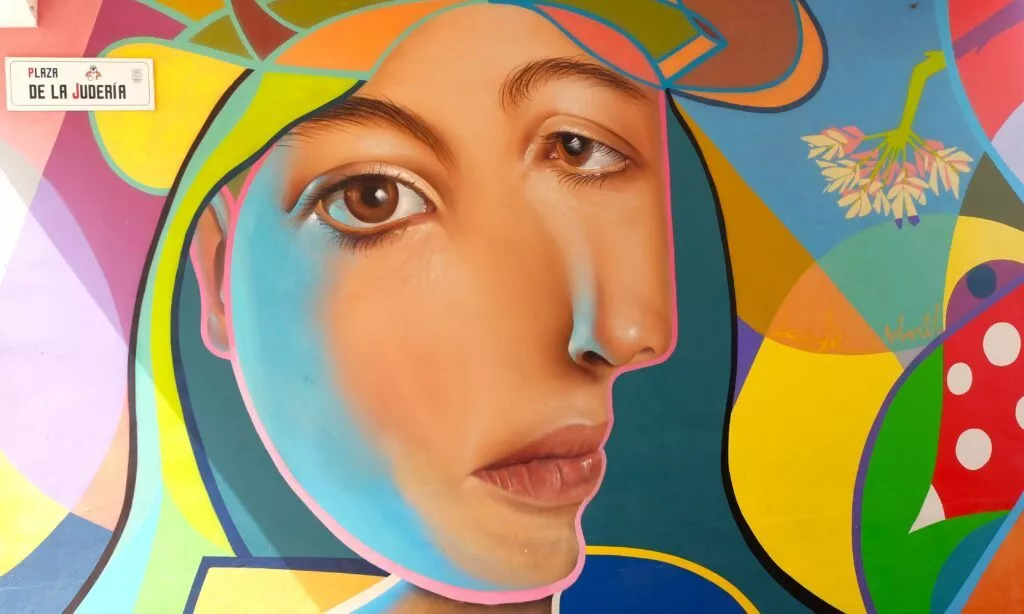
Granada
Visit Granada, discover the Albaicin and Sacromonte districts:
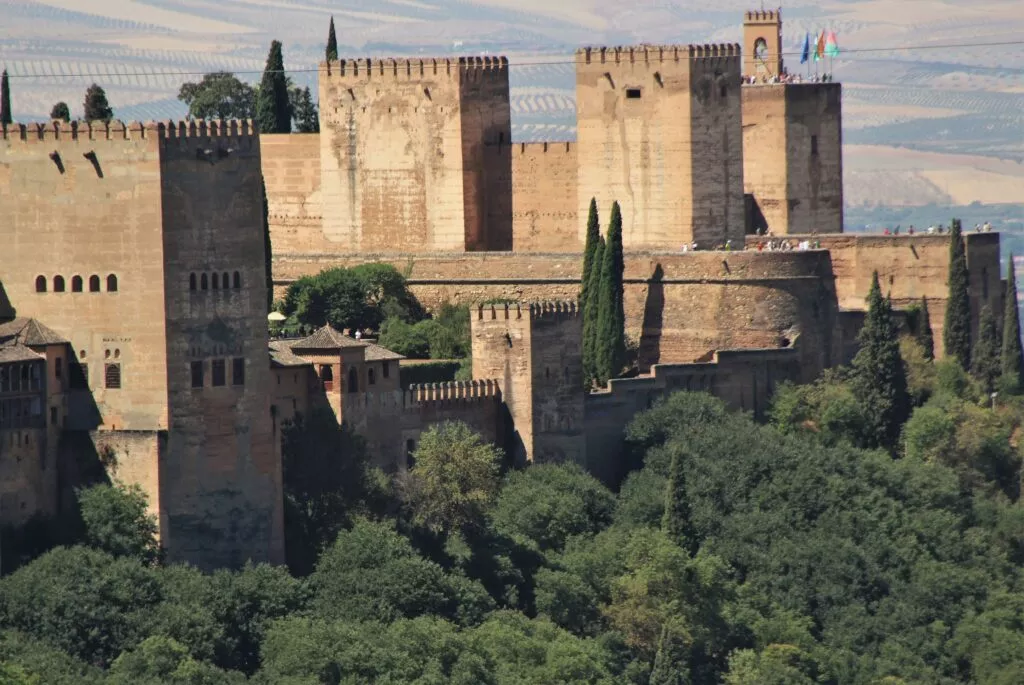
Cordoba
And of course, visit Cordoba, the caliphate city, and the Juderia district
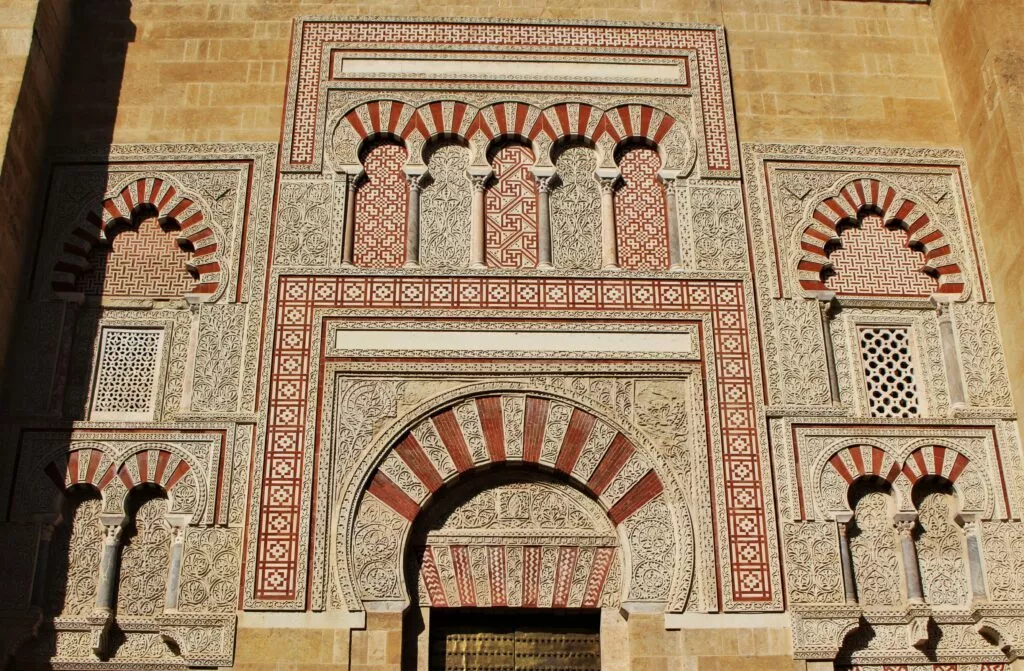
Discover more of Andalusia’s beautiful sites in the Andalusia blog pages.
Here is the link to receive our blog newsletter.
